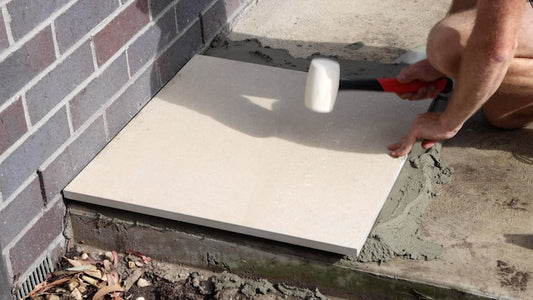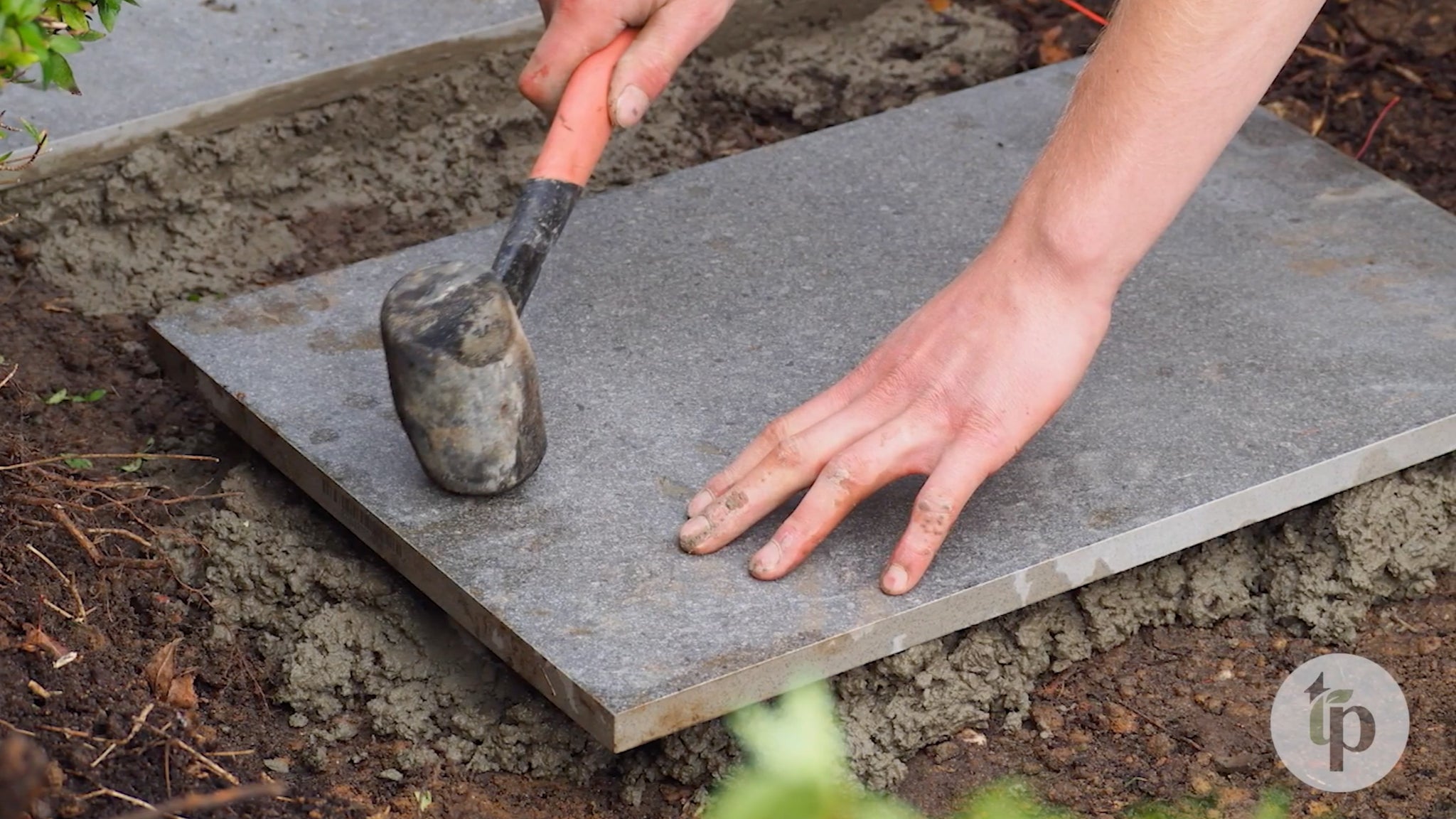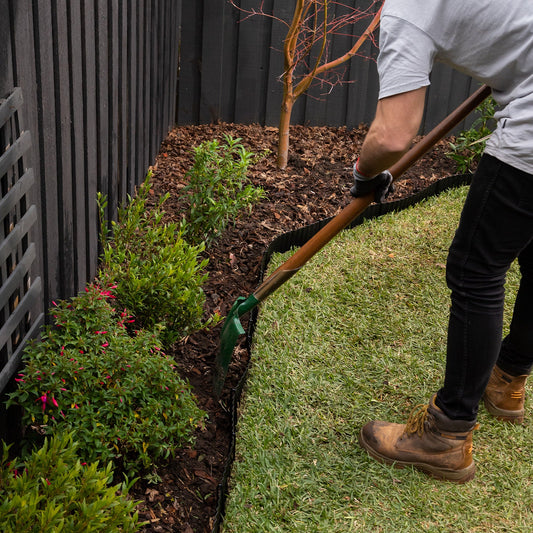
How to Install Tuscan Path Natural Stone Pavers on a Sand Base

TOOLS YOU'LL NEED:
Gather these tools before you begin your project:
Step 1: Prepare the Ground
A solid foundation is crucial for a stable paver installation.
- Clear the Area: Remove any rocks, roots, or debris from the area where you'll be installing the pavers. The surface must be clear and even.
- Sub-base Preparation: For the best results, start by laying a minimum of 40 mm of compacted road base over the area, followed by 20 mm of compacted sand and cement mix. Use a compactor to ensure the surface is firm and even. For areas that will have high foot traffic, you might consider using a mechanical compactor for added stability.
Step 2: Spread the Sand
Now that the sub-base is prepared, it's time to level the sand.
- Set the Level: Place two runner boards along your project area and ensure they are level. This will serve as your guide for the sand surface.
- Screed the Sand: Spread the sand evenly between the boards. Use a notched screed board to level out the sand, ensuring there are no high or low spots. Regularly check the surface with a spirit level to make sure it's perfectly even.
Step 3: Lay the Pavers
With the sand base prepared, you're ready to start laying the natural stone pavers.
- Start at a Fixed Edge: Begin laying the pavers along a straight, fixed edge, such as a wall or kerb, for a clean alignment.
- Place the Pavers: Gently place each paver onto the sand bed. Use a rubber mallet or hand tamper to lightly tap them into place.
- Spacing: Leave a 3 mm gap between each paver to allow for expansion and contraction with temperature fluctuations. This gap also allows space for joint-filling sand to settle.
Important: Always walk on the laid pavers, not on the screeded sand, to avoid disturbing the base.
Step 4: Compaction and Joint Filling
Once all the pavers are laid, it's time to compact and fill the joints.
- Compaction: Use a high-frequency, low-amplitude plate compactor to compact the pavers into the sand base. Perform at least three passes, ensuring the pavers are level and set securely into place.
- Compactor Protection: To prevent damaging the surface of the pavers, cover the metal base of the compactor with a 12mm plywood sheet or a thick rubber-backed carpet square.
- Joint Sand: Before compacting, spread a thin layer of joint-filling sand across the pavers. This will help the compactor move smoothly and prevent surface damage.
- Fill the Joints: After compaction, brush dry, clean sand into the joints until they are completely filled. Sweep off any excess sand and repeat the process until all the joints are fully filled.
Step 5: Install Edge Restraints
To prevent your pavers from shifting over time, edge restraints are essential.
- Subgrade and Sub-base: Compact the subgrade and sub-base under the edge restraint, ensuring the restraint extends at least 100mm beyond the outer edge of the pavers.
- Install Edge Restraints: Use pre-mixed concrete (20:14 mix, 20mpa, 14mm aggregate size) or an equivalent site-mixed solution. Install the edge restraint to a depth of 100mm, ensuring it creates a 'lip' that holds the pavers in place.
Step 6: Final Touches and Cleaning
Once your pavers are in place, it's time to finish up.
- Sweeping: Use a soft broom to sweep away any remaining debris or sand from the pavers' surface.
- Cleaning the Pavers: If needed, you can clean the pavers using a household cleaner or a low-pressure washer. Keep in mind, as natural stone pavers are porous, they should be sealed with a high-quality sealant after installation. Apply 2-3 coats of sealant to both the top and underside of each paver to enhance durability and protect them from stains.
Step 7: Admire Your New Natural Stone Paved Area!
After allowing the sealant to dry and the pavers to settle, step back and admire your work! Your new Tuscan Path Natural Stone Pavers have transformed your outdoor space into a stylish, durable area that will last for years.
Final Tips:
- Seal the Pavers: Natural stone pavers are porous and require sealing to prevent staining and maintain their longevity. Apply at least 2-3 coats of sealant to both the tops and bottoms of the pavers.
- Extra Pavers: Always purchase an additional 5-10% more pavers than you need to account for breakages or future repairs.
- Safety First: When cutting or compacting pavers, be sure to wear safety gear, including gloves, glasses, and earmuffs.
- Proper Maintenance: While these pavers are low maintenance, occasional cleaning and re-sealing will keep them looking pristine.
Tuscan Path Natural Stone Pavers come in a variety of stunning options, including Bluestone, Sandstone, and Light Grey Granite. They are naturally slip-resistant, easy to maintain, and capable of withstanding even the toughest Australian conditions. Whether you're creating a beautiful garden path, driveway, or patio, these pavers add both elegance and functionality to any space.

